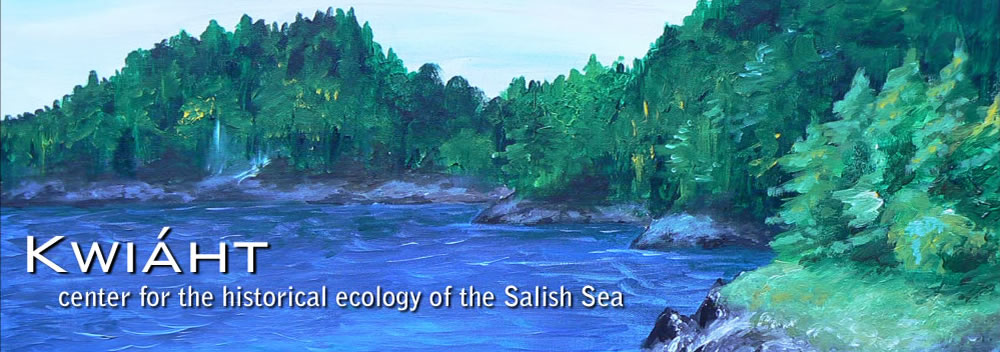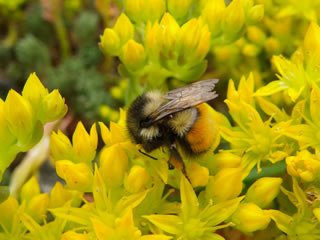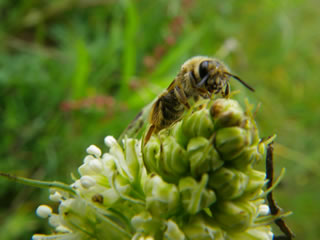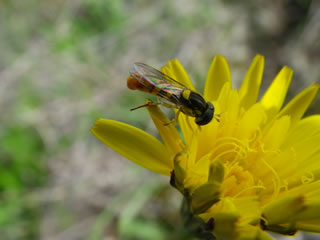Native Pollinators
Visit our Guide to Native Pollinators in the San Juan Islands
Native wildflowers attract many seasonal human visitors to relatively undisturbed rocky outcrops and small, uninhabited islands the San Juan Islands. Native species bloom from late January through September, but floral density and diversity peaks in April, May and early June: a burst of colors that can last from three to six weeks depending on the highly variable timing of each year's first warm, dry weather.
Island wildflower meadows continue to shrink as a result of habitat destruction—mainly clearing for homes and roads—as well as competition from invasive pasture grasses, and aggressive shrubs such as Himalayan Blackberry. Human foot traffic helps import seeds, and prevent native forbs from flowering and producing mature seed of their own. Kwiáht assists public land managers and local youth conservation groups in demarcating trails to relieve pressure on sensitive wildflowers, mosses and lichens.
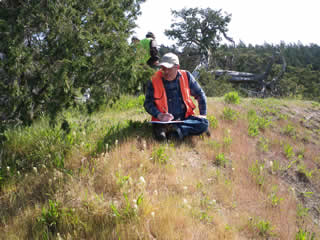
Counting pollinators
The number and diversity of native pollinators may also be decreasing because of habitat loss and pesticide use. Native bees nest under shrubs, in unplowed meadows, or hidden in hedgerows, where changes in land use ranging from enlarging lawns to tilling long fallow fields can destroy eggs and pupae. Declining wildflower populations and declining native pollinators should exhibit negative feedback.
Kwiáht research focuses on three questions: Which native pollinators are associated with different native flowering species? Does the distribution of pollinators in the archipelago determine the distribution of any native plants? To what extent do introduced Old World honeybees compete with native insects as pollinators of native plants—or crops?
Spring-summer surveys of one large inhabited island and 30 small, uninhabited islands indicate that native bumblebees (at least five species) are responsible for more than 90 percent of pollination of native wildflowers from April to July. In late summer, a diverse assemblage of smaller native bees, and Syrphid flies replaces the bumbles. Honeybees are rarely encountered in the isolated habitats and smaller islands that preserve the greatest native floristic diversity. Moreover, as studies elsewhere have shown and we have observed, bumblebees are more efficient pollinators because they tend to focus on one plant species at a time, rather than visiting all flowers within their territory.
A major Kwiáht goal for is the establishment of an archipelago scale network of "sentinel gardens" that enable us, with the assistance of trained gardeners and students, to monitor trends in native pollinator species abundance and distribution. Sentinel garden drawings and planting standards will soon be available on this page. If you are interested in being a sentinel gardener, or helping fund more sentinel gardens for schools and homes in the San Juan Islands, click here!
See also: PNW Moths (WWU)
